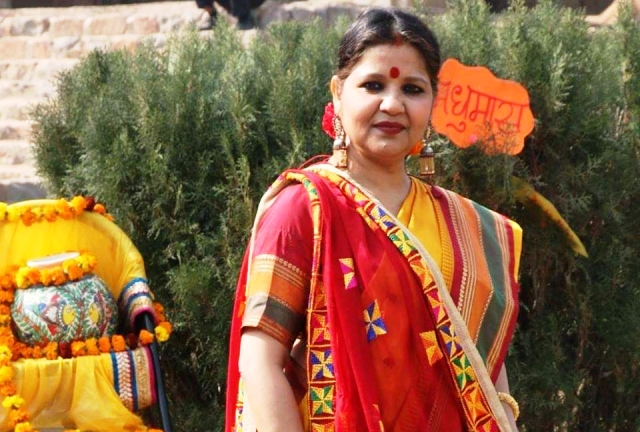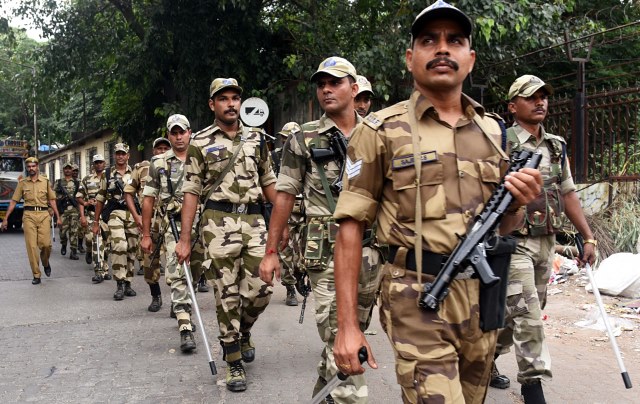Kashmir is in the news these days for
reasons right and wrong, and promises to persist for long. Pakistan is most
upset with India’s nullifying the special status under Article 370 of the
Constitution. It calls Kashmir “unfinished part” of the 1947 Partition.
But now it is being asked: was it part of
the Partition at all?
New research points to the British introducing
it after the Congress abandoned its government in the North West Frontier
Province (NWFP) (present-day Khyber Pakhtunkhwa) and also conceded Balochistan.
Old records show the British, after
reaching an understanding with the Muslim League, coaxed Jawaharlal Nehru to visit
NWFP which the latter did despite opposition from Sardar Patel and Maulana Abul
Kalam Azad.
Most crucially, ‘Frontier Gandhi’ Abdul
Ghaffar Khan and his brother and the province’s Chief Minister, Dr Khan Saheb, were
not consulted, when they ran a “strong’ Congress government.
Raghavendra Singh, a retired civil servant
while dwelling on his book, “India’s Lost Frontier: The Story of the NWFP
Province of Pakistan, ” says that Nehru made the “fatal mistake” of visiting the riot-hit province with approval of then
Congress chief Acharya Kripalani and agreed to an election and later, a referendum.
The ministry had to resign.
Once Ghaffar Khan and his Khudai
Khidmatgar were “thrown to the wolves” (in their words) the British found it
easy to include Balochistan in the south and Jammu and Kashmir in the north to
be incorporated into the future Pakistan.
Citing correspondence among the top
British rulers in New Delhi, the British Government and records of the Department
of Commonwealth Affairs of that era, Singh says: “The British approach
radically changed in 1946, soon after the end of the World War II. Lord Louise
Mountbatten was sent as the last Viceroy “only to complete the formalities.”
He rejects the principle of contiguity of
the two provinces that the British insisted upon. But for the ‘sacrificing’ of
NWFP and Balochistan, “there would have been neither the Kashmir dispute, nor lack
of access to Afghanistan that irk India today.”
Respective roles of the British and the
Indian leaders stand in stark contrast. The Congress and the Muslim League were
both part of this as “nobody wanted to go back to jail. They wanted to bury the
hatchet for good. Some Indians with
Western education and sensibilities thought the division was temporary.”
This reinforces what is well-known and
debated ad nauseam. Never the hapless umpire, the British wanted the Partition.
They played the proverbial cat distributing bread among the squabbling monkeys.
They saw Pakistan as their bulwark to
retain their influence in the region and that it would help ‘contain’ the
Soviet spread to the Indian Ocean region. A new chapter of the “Great Game” was
thus written.
In contrast, an independent India, too big
and diverse, was perceived as being not amenable to the West. The British also
wanted to create a Muslim nation to guard their interests with the monarchies
and the oil resources in the Middle East.
They proved right on many counts. The
Middle East saw unprecedented oil boom. The rise of a communist China, in
addition to the Soviet Union posed a bigger challenge. Independent India
empathized with both. They were proved wrong, however, that the British Empire
itself declined, almost totally, within two decades of the Partition.
It’s time to question the inevitability of
the Partition, at least how it was executed. How entire provinces were divided
despite their mixed populations, causing millions to flee their homes amidst
bloodshed – and bad blood that persists today. Neither the British, nor Indians
anticipated this, despite communal tensions.
Opinion is emerging among select Indian
scholars, especially civil servants and diplomacy practitioners who have seen
the world closely. Using British records, it challenges the British-guided
history of the region.
Through them, it is possible to view larger
picture of the South Asian region and also the adjoining West Asia as part of
the “Great Game” that continues to be played through its many avatars.
Also, through them, it is possible to view
many faults and failures of Indian political leadership of that era without
getting embroiled in the current, largely uninformed debate that is besotted
with a political agenda, of deifying some leaders and demonizing some others.
The problem, pointed out by Ambassador TCA
Raghvan, author of “The People Next Door: The Curious History of India’s
Relations with Pakistan” (2017) is that “we view history with contemporary
eyes”.
It is not clear how far the Subcontinent’s
political leaders were able to grasp the larger – regional, if not global –
worldview, of how the European colonizers, having ruined themselves fighting the
World Wars, sought to draw Asia’sn national borders, intent on keeping their
strategic and economic hold. They
didn’t, or at least, not enough. For, all conflicts since then have occurred in
Asia.
India’s division was preceded by a line British
India drew with Afghanistan. Ambassador Rajiv Dogra in his book, “Durand’s Curse – A Line Across
the Pathan Heart”(2017), emphasizes how an invisible, but powerful line (drawn
by and named after British foreign secretary, Sir Mortimer Durand) divides the
ethnic Pashtuns and continues to cause friction between Kabul and Islamabad to
the detriment of both.
To this day, in multi-ethnic Afghanistan,
its dominant Pashtuns nurse an unrealized dream of Pashtun homeland. And to this day, Afghanistan, the graveyard
of many Empires, yet coveted by many because of its location, remains a nation
in perennial turmoil. It is possible to foresee severe instability in
Afghanistan, no matter who rules.
Looking at the larger picture, yet another
Afghanistan sub-chapter in “Great Game” may be written soon with the United
States’ victory-less withdrawal. The Asians will play proxies, and the conflict
will continue.
China, the emerging global power, already embracing
most Asians with its multi-billion Belt and Road Initiative (BRI), will be a
significant player, backing its key proxy Pakistan. India may be ‘friendless’, yet
again.
Back to Kashmir: Whatever be domestic
compulsions and consequences, the Kashmir factor that India has introduced also
promises to be part of this larger ‘game.’ The India-Pakistan rivalry will surely
persist. India will not roll back Kashmir’s re-worked avatar and Pakistan will
not countenance it.
Odds are heavy against Pakistan. Like it
could not keep out of the Afghan imbroglio in the past, much to its detriment long-term,
it cannot ignore Kashmir either.
Pakistan’s military-civil leadership now tackle
two-front turmoil of having to secure border with Afghanistan while pushing the
Taliban towards Kabul, and with India — opposition its Kashmir moves while
keeping the Kashmir pot boiling within the country and before the world
community.
Despite pressures from within and provocations from without, India can and may ‘digest’ this if it genuinely reaches out to the Kashmiris. If it fails, not 1947, but the year 2019 will be the base year for future historians.
The writer can be reached at mahendraved07@gmail.com









